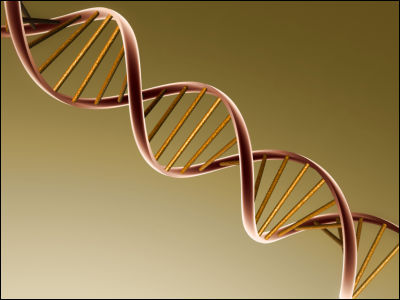Successfully capturing the moment of HIV infection

byNIAID
It infects and destroys human immune cells, and finallyAcquired immunodeficiency syndrome(AIDS) is caused by viruses that cause "Human immunodeficiency virus(HIV) ". In the body of people infected with HIV, HIV is secreted much in blood, semen, vaginal secretion fluid, breast milk and so on. On the other hand, however, body fluids such as saliva, tears and urine are not secreted by the amount of virus that can infect other people, so the main infection routes are "sexual infection", "blood infection" and "mother - to - child infection" It is said to become. A movie capturing the moment of "sexual infection" in this is released and it is becoming a hot topic.
HIV sexual transmission recorded live as the virus crosses the genital mucus membrane
https://www.zmescience.com/science/hiv-sexual-transmission-live-432423/
For a long time scientists had estimated that HIV would infect humans via genital mucosa, but they did not actually see and confirm that moment. However, researchers at the Cochin Research Institute in France have for the first timeIn vitro model, We have succeeded in actually observing how HIV infects immune system cells.
Morgan Boncell, Molecular Biologist at Cochin Research Institute, was infected with HIVT cellsWas introduced into the in vitro model of the urethral mucosa and the moment when HIV infected other cells on the mucosa was observed. In experiments, we tried to make cells easier to observe by coloring cells with a fluorescent green protein. According to Boncell, he succeeded in recording how cells contact the epithelial cells on the mucosa at the moment the virus synapse was formed.
In the following movies a collection of points shining fluorescent green is the cell infected with HIV, that is, the source of the infection. The moment when it is in contact with the epithelial cells on the mucosa through the synapse is reflected.
Top View of HIV-Infected Cell in Contact with Epithelium - YouTube
The surface of epithelial cellsTranscytosisWhen HIV is transported, HIV is a type of leukocyteMacrophageIt is surrounded by.
HIV-Infected Cell Forms and Sheds Virus to An Epithelial Cell - YouTube
Mr. Boncell said "Once HIV-infected cells have contacted epithelial cells, they start to drain the virus like a bullet, after infusing a fluorescent green colored virus into the mucosa for several hours, it was infected The cells will separate and leave. "As you can tell, you can release the virus like a bullet, and finally you can see HIV's appearance separating the infected cells away from the following movie.
HIV-Infected Cell Sheds Virus and Leaves - YouTube
The most surprising finding in the movie that captured the moment of HIV infection by Bonsel et al. Research team was that the virus-infected T cells were targeted to epithelial cells directly above macrophages. This suggests that interaction may exist between macrophages and epithelium.
HIV-infected macrophages continue to produce virus for 20 days, after which the cells become non-viral producers. Although it seems to have finished the role, this virus is still stored in the microphage of reproductive organ tissues. This is one kind of answer of "Why is it difficult to treat HIV?" In HIV therapeutic drugs (antiretroviral drugs), the treatment can not reach the area where HIV was stored, and once you stop taking medication it again infects It is because it becomes a source.
Recent studies have developed a vaccine that can be administered at the early stage of infection to avoid the formation of HIV storage area by using a vaccine that acts at the mucosal level. The research team is also conducting research to find ways to separate HIV storage areas that have already been completed.
Related Posts:







